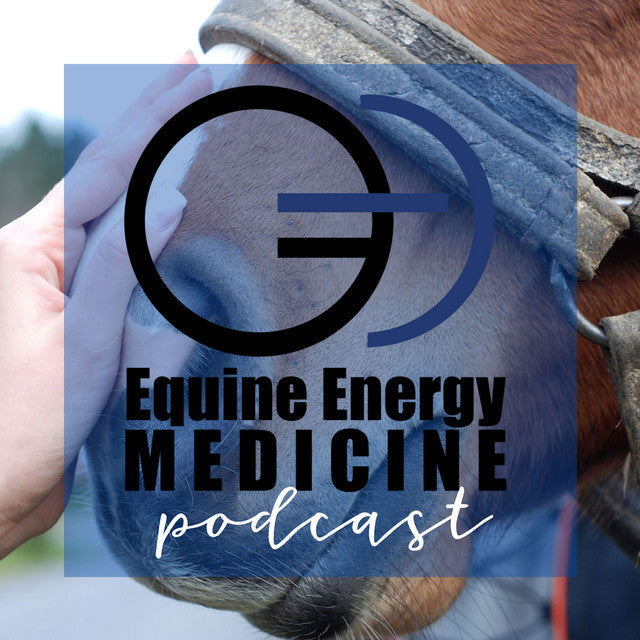Tackling Mud and Muck: Managing Wet Conditions in UK Equestrian Environments

As you probably know living in the UK, equestrian centres and horse paddocks often grapple with wet and muddy conditions, particularly in high-traffic areas like gate entrances and water troughs. Depending on the amount of rainfall and the efficiency of ground drainage, when these areas get mucky, it limits the turnout options for horses.
This situation highlights the critical importance of having a robust pasture management plan, particularly when the ground becomes excessively wet. Without proper management, horse fields can quickly turn into what we call "poached" areas. In simple terms, this means that the ground is churned into wet, muddy patches due to the continuous trampling of horse hooves.
Unfortunately, this can lead to numerous challenges for horse owners and more importantly pose health risks to the horses themselves, in this article we will go through the necessary management to ensure your horse is comfortable and happy during these wet months of the year.
Issues caused by muddy wet paddocks
First off let's start with some of the issues that can be caused by muddy wet paddocks. For some horses, exposure to even small amounts of mud can cause problems with their hooves and skin such as:
Abscesses
Horses that spend extended periods standing in muddy conditions are susceptible to bacterial infections in their hooves because bacteria flourish in damp environments. These harmful bacteria can infiltrate the hoof and penetrate sensitive areas, leading to infections. Once inside, they multiply and can trigger abscesses.
Another frequent hoof problem, especially during winter, is thrush. To heal quickly, horses with thrush need a clean and dry surface to stand on.
Mud fever
Mud fever is a troublesome and often frustrating condition that afflicts horses subjected to persistently wet or muddy environments. It can stem from various causes, including viral, bacterial, fungal, or even parasitic infections. Dealing with this condition requires a careful and comprehensive approach to ensure the best possible outcome for your equine companion.
Lost shoes
When the ground is muddy, horses might experience a higher frequency of lost shoes. This doesn't happen because the mud is literally sucking off the shoe; rather, it's due to the slippery nature of the terrain. In these conditions, horses are more prone to missteps as they strive to maintain their balance, sometimes stepping on their own hooves and causing the shoes to come loose.

Softening Hooves
When horses are waiting to be fed or caught, they often linger near the gate for quite a while. If this area is wet or muddy, it prevents their hooves from drying properly. This continuous moisture softens the soles of their hooves, which, in turn can kickstart a host of other issues, including hoof bruising or the development of abscesses.
Tendon and ligament damage
In muddy conditions, horses are at risk of twisting their legs unnaturally, which can result in serious and expensive! injuries to the delicate tendons and ligaments of the limbs.
Tips for dealing with muddy areas

The best way to decrease the likelihood of the issues mentioned above is to steer clear of prolonged exposure to mucky conditions. In addition to routinely cleaning your horse's hooves and using a towel, it is also good to promote better airflow in poorly-ventilated areas, take into account the following suggestions:
- When the ground becomes extremely wet, it's a good practice to temporarily relocate the horses. This not only helps rejuvenate the paddock but also provides the hooves with an opportunity to dry. If feasible, consider setting aside a specific field for winter turnout. Ideally, select the paddock with the most efficient drainage for the colder and wetter months.
- When your horse returns from the field covered in mud, resist the urge to hose off their legs. Surprisingly, this counterintuitive approach is supported by recent studies that indicate hosing can make it tougher to combat mud fever. The reason behind this is that cold water chills the horse's limbs, reducing blood flow and the flow of antibodies to the lower legs where mud fever tends to occur. If you absolutely need to wash your horse's legs, use warm water and ensure they keep moving until their legs are completely dry.
- Horse owners frequently use ground mats, often called 'mud mats,' to shield the ground from being trampled into a mess. Many horse owners prefer Top Clean mats because they're purpose-built for horses. These mats provide a secure and solid surface, preventing slipping and making it easier to maintain your horse's living areas.
- Regularly clean out field shelters and renew bedding when needed this ensures the horses have a comfortable dry area away from the weather.
Mud Management
Muddy areas are an inevitable challenge for horse owners, especially during wet seasons or in regions with heavy rainfall. Prolonged exposure to muddy conditions can lead to a host of problems for your horse, from hoof issues to overall health concerns.
However, with some thoughtful management strategies, you can create a cleaner and healthier environment for your equine companion. In this article, we'll explore tips on how to manage muddy areas and keep your horse comfortable and happy.
-
Drainage is key
Effective drainage is the foundation of managing muddy areas. To combat excess water and mud, ensure that your horse's living spaces, such as paddocks and turnouts, are well-equipped with proper drainage systems. Consider adding gravel, stone dust, or rubber mats in high-traffic areas to improve water runoff and reduce mud accumulation.
-
Mud Mats or Ground Mats
Ground mats or 'mud mats' are a valuable investment for horse owners. These mats create a stable and non-slip surface, making it easier for your horse to move around without sinking into the mud. Top Clean mats, designed specifically for horses, are popular among horse owners for their durability and effectiveness in creating clean, hard-standing areas.
-
Turnout schedule
Plan your horse's turnout schedule thoughtfully. Avoid turning out your horse in muddy conditions when possible. It's beneficial to designate a specific field or paddock with the best drainage for winter turnout during wetter months. By rotating pastures and managing turnout areas effectively, you can minimise the impact of mud.
-
Regular Mucking and Grooming
Frequent mucking and grooming are essential. Regularly clean your horse's hooves, removing any mud and debris. This helps prevent issues like thrush and other hoof-related problems that can arise due to prolonged exposure to mud. Grooming not only keeps your horse clean but also provides an opportunity to check for injuries or skin issues.
-
Shelter and Dry Areas
Ensure your horse has access to shelter in the form of a stable or field shelter during inclement weather. A dry, well-ventilated shelter provides refuge from rain and cold winds, allowing your horse to stay dry and comfortable. Use appropriate bedding materials in the shelter to maintain a hygienic environment.

-
Proper Nutrition and Hydration
A well-balanced diet is crucial to help your horse maintain body condition and stay warm during the winter months. Provide ample forage, such as hay or haylage, which generates heat during digestion. Ensure your horse has access to clean, unfrozen water to prevent dehydration.
-
Hoof Care
Regular hoof care is vital. Wet and muddy conditions can take a toll on your horse's hooves. Regularly trim and clean your horse's feet. Consider using hoof boots to protect them from the wet ground, and apply hoof treatments as needed to maintain hoof health.
Managing muddy areas for your horse requires careful planning and consistent effort. Effective drainage, mud mats, and strategic turnout are essential tools to combat the challenges posed by wet conditions.
By implementing the tips mentioned in this blog and maintaining a clean and comfortable environment for your horse, you can ensure their well-being and enjoy a more pleasant experience, even during the muddiest of seasons.
















